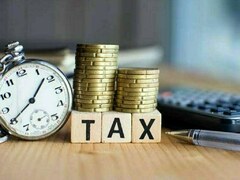Energy sector: Circular debt jumps to over Rs5.725trn
- Minister for Power and Petroleum prepares an innovative plan to reduce circular debt of energy sector
ISLAMABAD: Pakistan’s energy sector circular debt has jumped to Rs 5.725 trillion as of November 2023, of which share of power sector stood at Rs 2.703 trillion whereas contribution of gas sector at Rs 3.022 trillion, sources close to caretaker Minister for Power and Petroleum told Business Recorder.
The caretaker minister has prepared an innovative plan to reduce circular debt of energy sector, which has been shared with caretaker Finance Minister Dr. Shamshad Akhtar.
According to the main features, the plan will be restricted to public sector companies only, budget neutral and zero leakage. “Total settlement of Rs 1.268 trillion will be done.
Power sector circular debt swells despite recovery drive
The FBR tax revenue will increase by Rs 25 billion. It will make primary balance surplus of Rs 3.4 billion. Late Payment Surcharge (LPS) of up to Rs 133 billion will be settled/ adjusted in the books of Public Sector Companies,“ the sources said adding that settlement would require funding from finance.
The sources said, prior clearance is required from Finance Ministry, IMF and Companies Board of Directors.
According to caretaker Minister for Power and Petroleum has been directed to consult caretaker Finance Minister with their respective teams for an agreement on the viability of the plan. Sharing details about proposed power tariff rationalization plan, the sources said, that there is mismatch between cost and revenue structure - 70 per cent costs are fixed whereas only 2 per cent revenue is fixed.
Around 98 per cent domestic consumers (29 million) are getting subsidy of Rs 631 billion of which Rs 168 billion is GoP subsidy whereas rest is being borne by the industrial and commercial consumers.
The sources said, current tariff design may lead to economic meltdown. Regionally Pakistan is offering non-competitive industrial rates and has very low fixed revenue.
“No fixed cost on residential category and very low on other categories. Highest electricity tariffs for industrial consumers in the region,” the sources added.
Copyright Business Recorder, 2024
























Comments
Comments are closed.